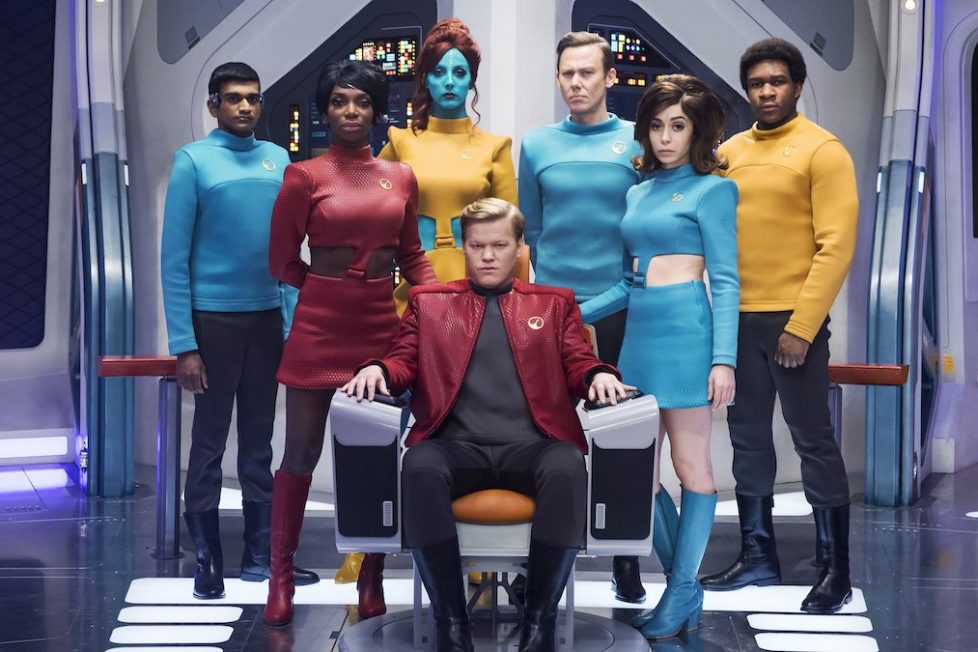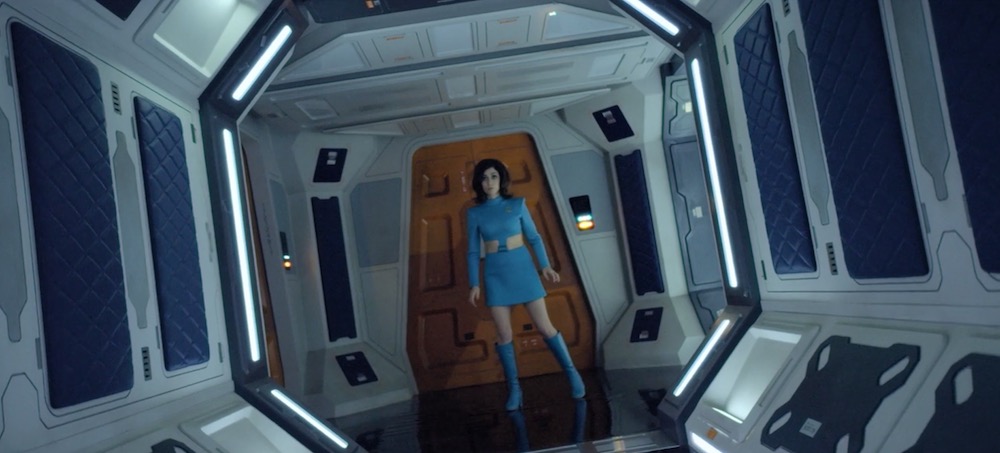BLACK MIRROR, 4.1 – ‘USS Callister’


The great thing about many Black Mirror stories is how they often have multiple layers, with even the concept appearing to be one thing before contorting into something twice as disturbing. “USS Callister” is a fine example of that, because when the promotional photos were released it seemed like Charlie Brooker was doing a Star Trek parody, with rumours it would be a Galaxy Quest-style episode focusing on TV production or sci-fi fandom. The truth was slightly more relevant to Black Mirror’s technological leanings, naturally, but while early scenes appeared to confirm the USS Callister was a virtual reality experience (not unlike the Star Trek Bridge Crew VR game), the truth of the matter took things to the next level…
Ultimately, this was a timely story about psychological abuse in the workplace and toxic masculinity. Robert Daly (Jesse Plemons) is the co-founder of Callister Inc., a company behind a massive multiplayer online game (MMO) that customers access using neural interfaces. Unfortunately, while new employee Nanette Cole (Cristin Milioti) looks up to Robert as a visionary genius, humbled to be in the presence of him, the truth is that the workplace is dominated by Callister’s other founder, James Walton (Jimmi Simpson), who who treats Robert with contempt and sees him as an egghead he can exploit.
“USS Callister” takes place in two very different worlds, because after-hours Robert seeks refuge in one of his simulated realities, which he’s designed to resemble his favourite 1960s sci-fi TV series Space Fleet. In the game he plays the Captain and his crew are doppelgängers of the people he works with at the office; from programmers Shania Lowry (Michaela Cole) and Dudani (Paul Raymond), to receptionist Elena (Milanka Brooks) and intern Nate Packer (Osy Ikhile).
What’s interesting about the story is how these people aren’t fellow gamers, with Space Fleet being a way everyone unwinds together after a tough day at work. This is what it appears to be at first glance, but soon we realise that Robert has unethically created digital clones, using DNA he harvests from his employee’s coffee cups and suchlike, so he can act out the fantasy of being an alpha male. In particular, Robert takes great pleasure in subjecting the bullying Walton to public ridicule, literally using him as a footstool in one scene.

What works brilliantly about “USS Callister” is how your perception of what’s going on evolves as the story develops, together with where your sympathies lie. Space Fleet seems like a strange but harmless way for a doormat like Robert to escape from his problems, by pretending he’s the courageous captain of a gleaming starship, and knowing how terrible Walton is makes you understand why Robert would want to exist somewhere where their power dynamic is reversed.
However, once you realise these “clones” are effectively “real people” subjected to the whims of a tyrant with godlike power within the game, it becomes impossible to justify what Robert’s doing and he becomes the clear villain.
This is probably the most accessible Black Mirror episode there’s ever been, because it’s easier for casual audiences to slip into what appears to be a bright and colourful Star Trek parody. The visuals and sets are excellent, with terrific direction from Toby Haynes (Doctor Who, Sherlock), and there are many sequences where the episode feels like a completely accurate rendering of late-’60 US TV. I’m not sure what the budget was “USS Callister”, but once the story comes to involve a few alien monster (i.e. unruly employees Robert punished by transforming them into beasts) the quality of the F/X aren’t far below a big-budget movie.
Writers Charlie Brooker and William Bridges were clearly inspired by many things when crafting this hour: Star Trek of course, the current rise of multiplayer VR games, but also the 1953 Twilight Zone episode “It’s a Good Life” (which was remade for the 1983 feature film in Joe Dante’s vignette). That story involved an immature boy with superhuman powers, who has become someone adults fear and will do anything to appease. There’s crossover there with Robert Daly’s character and how everyone behaves around him in Space Fleet, as his crew have to pretend they’re enjoying this kitsch space adventure. They blindly follow every stupid order he gives to the letter, because if they step out of line he can dole out frightening punishment like removing their faces so they’re unable to see, hear, or breathe for as long as he desires. You can’t even die in the game to escape Robert’s tyranny.
Like all good Black Mirror instalments, it’s a gateway to a lot of unsettling questions, forcing you to consider the horror of having to spend your days as the “plaything” of a power-crazed boss, unable to escape his psychological torture and the interminable routine. When Robert goes “offline” to work, or pauses the game to eat pizza, his captives get some respite because he’s no longer around to bully them in the game… but they can’t leave the ship or even have sex to pass some time (as their digital selves have no genitals).
This is a slightly more “traditional” episode of science fiction from Black Mirror, because it follows a familiar arc of having someone new arrive and try to lead everyone to freedom.
Here, it’s beautiful new girl Nanette, who Walton takes a shine to in the real world, so jealous Robert creates a duplicate of her for the USS Callister game to be his love interest instead. It’s admittedly very sketchy how this process works, because you can’t harvest people’s memories and personalities from simple DNA swabs. That’s the big flaw with this episode’s concept, as it would make more sense that Robert has a gadget that can perform a brain-scan to create digital clones, but for the purposes of the story I was happy to go with it. Perhaps Brooker and Bridges thought involving physical DNA was necessary, because it allows there to be something for Robert to tangible own in the real world that needs to be disposed of to prevent him just recreating them if they escape.
Regardless of a few conceptual knots, seeing Nanette try to adjust to the nightmare of her new life aboard the USS Callister, surrounded by familiar faces who’ve been cowed into submission by Robert over the months (or years?), was a great way to draw you into the story and see things from their perspective. The methods Nanette thought up to get a message to the outside world, to try and orchestrate an “escape” with a suicide mission through a wormhole (representing a critical software update) was also a lot of fun. I found myself on the edge of my seat, hoping Robert gets his comeuppance.
And, without giving too much away, the episode avoids the Black Mirror cliche of ending on the most depressing note imaginable. It perhaps takes things a little too far, with an unnecessary element where the villainy of Robert is underlined when he murders a duplicate of Walton’s son to ensure obedience, but for the most part this was a very imaginative, creative, unsettling, thrilling hour of high concept sci-fi. It certainly proved that Black Mirror still has a few tricks up its sleeve.
